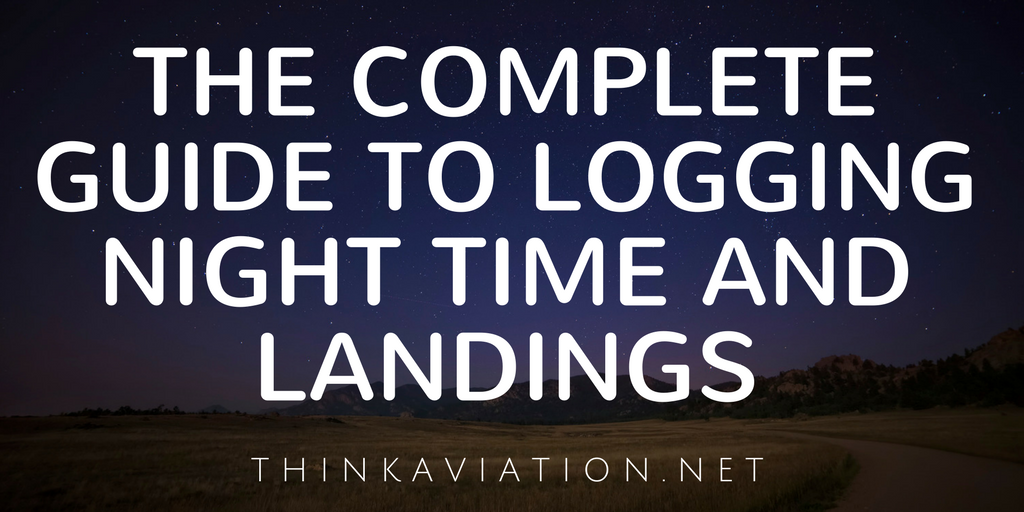 Confused as to when you can log night time versus night landings for currency?
Confused as to when you can log night time versus night landings for currency?
Me too.
This article will answer all the questions you may have pertaining to night currency and logging night time including the differences in Part 91, 135 and 121 requirements.
I will answer the following questions and more:
- When can I log night flight time?
- When can I log night landings for currency?
- Do simulators count for night currency?
- When can I log night time in the military?
Let’s begin:
When can I log night time in my log book?
You would think you could start logging night time when the sun officially goes down, but not so.
You can only log night flight time after the end of civil twilight time until right before the beginning of civil twilight.
How can you find out civil twilight time? You need to go to the Navy’s website by clicking here.
This is what it looks like:
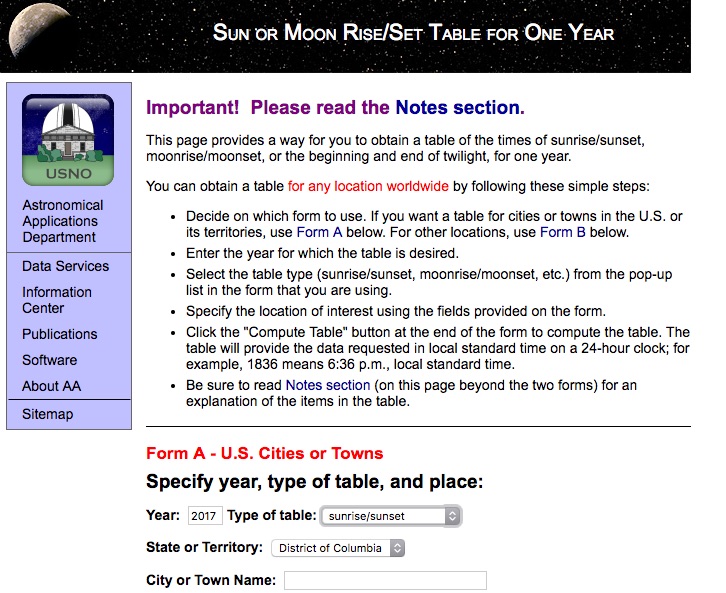
Select “civil twilight” and appropriate state from the drop down menu then enter your city.
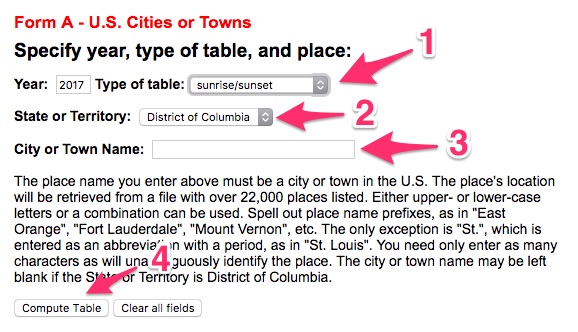 Once you click “compute table,” you will see a chart with a whole year’s worth of information. Find your month and date and now you know when you can log night flight time.
Once you click “compute table,” you will see a chart with a whole year’s worth of information. Find your month and date and now you know when you can log night flight time.
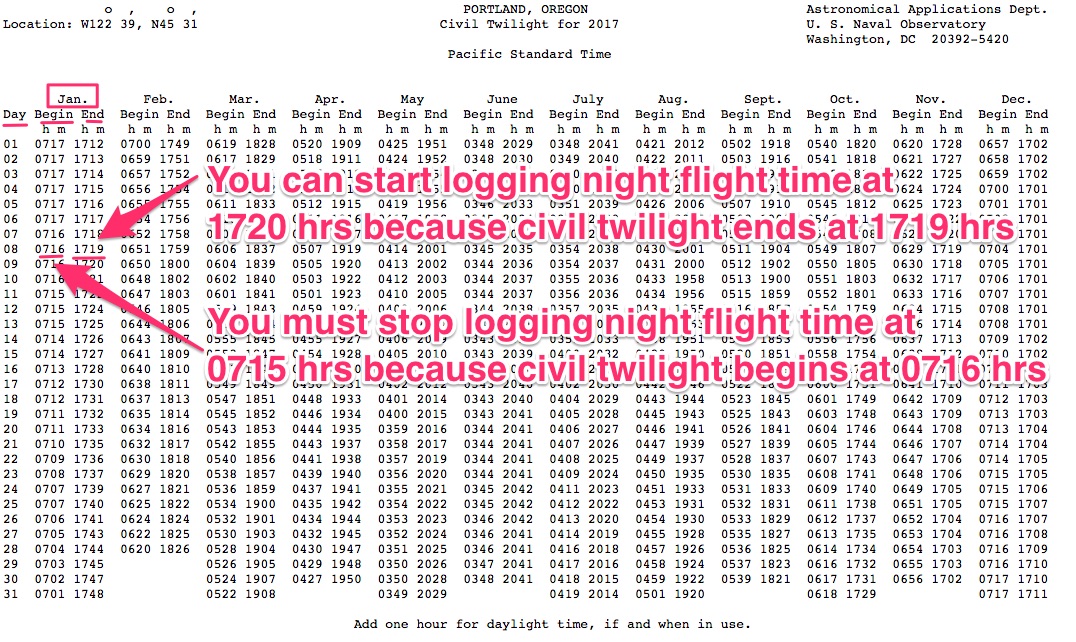
But what about sunset and sunrise time? That doesn’t count?
No, you are only required to have your position lights on after sunset until sunrise. You can find those times the same way you find the civil twilight time. Go to the Naval Observatory website.
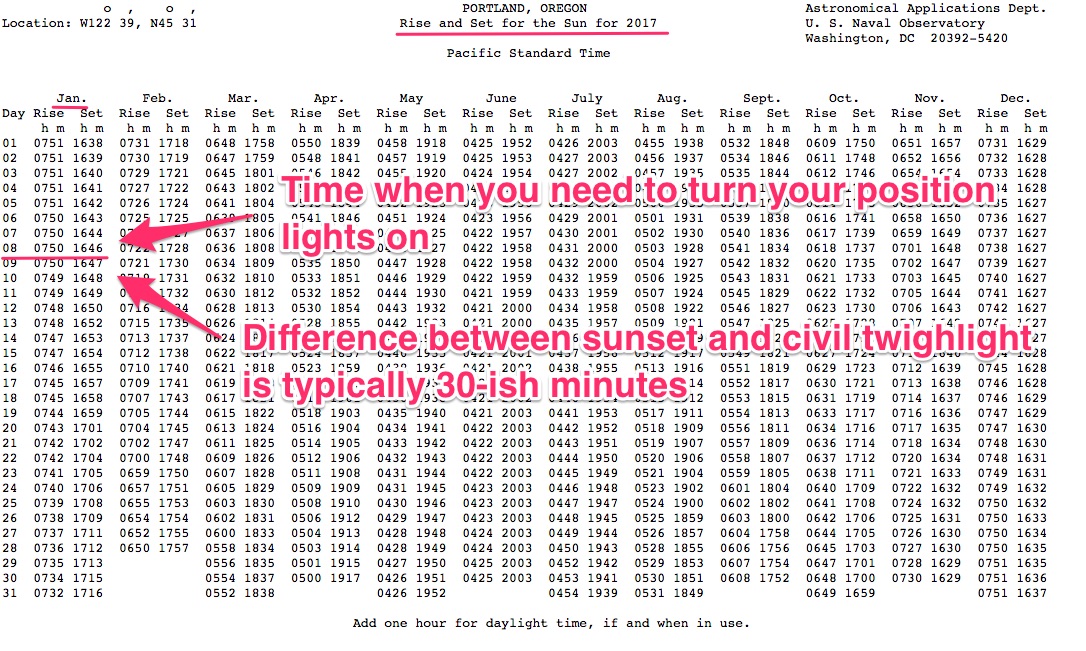
Notice the difference between civil twilight and sunset? It is typically a 30-minute difference.
If you want to skip the hassle of knowing exactly when civil twilight begins, just add and subtract 30 minutes from sunset and sunrise for logging night flight time.
It is really easy to find sunset and sunrise information, but it takes longer to find civil twilight. There are apps with sunset and sunrise data, Fltpln.com prints it on their flight plans, and of course Foreflight makes it really easy:
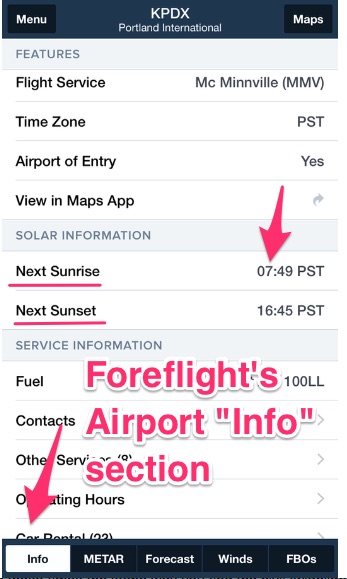
When can I log night landings for currency?
I am going to split this section into Part 91 (general aviation), Part 135 (corporate) and Part 121 (airlines).
Part 91 (general aviation and some commercial operators)
Before we get into this, you need to understand currency only applies if you want to carry passengers after 1 hour past sunset to 1 hour before sunrise.
The FAA doesn’t care about you killing yourself when it’s dark. They don’t want you killing other people if you haven’t landed at night in over a year.
So, for Part 91 operators, if you want to carry someone with you 1 hour after sunset to an 1 before sunrise, every 90 calendar days you need to do three landings and takeoffs to a full stop.
These takeoffs and landings must be made to a full stop.
The FAA gives you an hour of leeway time after the sunsets to get your passengers on the ground if you aren’t current, even though you can legally log night time for about 30 minutes of that time. Yes! It’s confusing!
Part 135 (corporate or government pilots)
There is one difference for Part 135 operators.
If you aren’t current, you can’t act as the Pilot in Command. As per CFR 135.109, Part 135 operators are required to designate a PIC for each flight. So, if you haven’t done your night landings, you can’t be a PIC, but you can be a SIC. There are no restrictions in the regulations from you acting as a SIC.
Part 135 also allows touch and go’s…with one exception I won’t get into because it’s convoluted. Read CFR Part 135.247 for more information.
Part 121 (airline pilots)
I know you probably won’t believe me, but Part 121 airline pilots have no night currency requirements.
When you read CFR 121.439 it only mentions the pilot must do “least three takeoffs and landings in the type airplane in which that person is to serve.”
Those takeoffs and landings can also be in a simulator.
I don’t know why Part 121 pilots don’t have these requirements, but I suspect it’s because they are well trained, or it’s too hard to keep everyone current.
If you do have night currency requirements, it’s probably because your company’s Operations Specifications or Operations Manual added that requirement.
Both Part 91 and 135 requirements:
Here’s where the mass confusion begins: night landings only count if they are done 1 hour after sunset to 1 hour before sunrise.
Remember how you can only start logging night time from the end of civil twilight to right before the beginning of civil twilight? Well, that doesn’t apply to night landing currency and carrying passengers.
The FAA wants to make sure it’s really really dark when you do your landings.
Which means, there is a 30-minute window when you can log night time in your log book, but you can’t log any of the landings towards currency.
Seriously!
Here are a couple of other restrictions:
You must be the sole manipulator of the flight controls when you do those three landings and takeoffs to a full stop. Watching someone do it doesn’t count!
It also must be in “an aircraft of the same category and class, and if a type rating is required, of the same type in which that person is to serve.”
So, for me, I fly a King Air 350 and a King Air 200. Even though they are virtually identical, because the 350 is a typed aircraft, I have to do night landings in both the 350 and the 200. Super annoying, but I understand why they do it.
Note: If you’re a little confused on the difference between category, class and type rating click here to read an in-depth article.
The bottom line is: your landings in a helicopter won’t count for airplane landings. Your single engine landings won’t count for the multi-engine landings. Your single engine seaplane landings won’t count for landing a Cessna 172.
Confused yet? I hope not! But if you still are, keep reading. I am going to give you some examples to tie this all together with some scenarios.
Let’s say you want to carry your mom and dad in your Cessna 182 and you got a little delayed coming back home. It’s starting to get dark.
Scenario 1: You aren’t night current.
Legally you can’t carry passengers up to 1 hour after sunset if you are uncurrent. So, you have 1 hour to get your passengers on the ground from the time the sun sets. Hurry up! No exceptions.
The funny thing is: you can still log “night” time from the end of civil twilight time. So you could be uncurrent, logging night time, carrying passengers and still be legal.
Just make sure you land before that magical 1 hour.
Scenario 2: You are night current in the King Air you fly, but you haven’t flown the Cessna 182 in about 4 months. You really want to fly your parents that night.
Wait until 1 hour after sunset, go out and do three landings and takeoffs to a full stop in the Cessna, taxi back and pick them up. Off you go!
Remember:
- Make sure you position lights are on at sunset.
- Start logging night time when civil twilight ends.
- If you happen to land/takeoff an hour after sunset, by all means, log a night landing because in 90 days you turn into a pumpkin again.
Scenario 3: You’re night current.
No worries! You are good to go. This is a lame scenario, but I wanted to point you still have some restrictions:
- Make sure your position lights are on at sunset.
- Start logging night time when civil twilight ends.
- If you happen to land or takeoff an hour after sunset, log your night landings/takeoffs because in 90 days you will turn into a pumpkin again.
Do simulators count for night currency?
Yes, they do, but they have to be approved by the FAA which I pretty sure means they need to be full motion simulators. I didn’t feel like doing the research on this topic to find out which ones count. Trust me when I say you would know if you are going to an approved simulator.
This question really only helps Part 91 and 135 operators who send their pilots to recurrent training at Part 142 centers like FlightSafety.
When can I log night time in the military?
I can’t speak for the other services, but if you are in the Army, there is no such thing as civil twilight or one hour after sunset.
Night time begins at sunset and ends at sunrise. That’s when you can log night time and night landings. Period.
I wish the FAA would take that stance. We wouldn’t need a 1300 word blog post to explain night landings and currency.
Additional Reading:
CFR 61.57: Recent flight experience
CFR 121.439: Part 121 (airlines) recent experience
Hey! One more thing!
Did you like this article? I email my readers every week with more articles and aviation tips just like this. The thing is, these aviation tips aren’t on my blog! You can only get them by subscribing.
Sign up below.